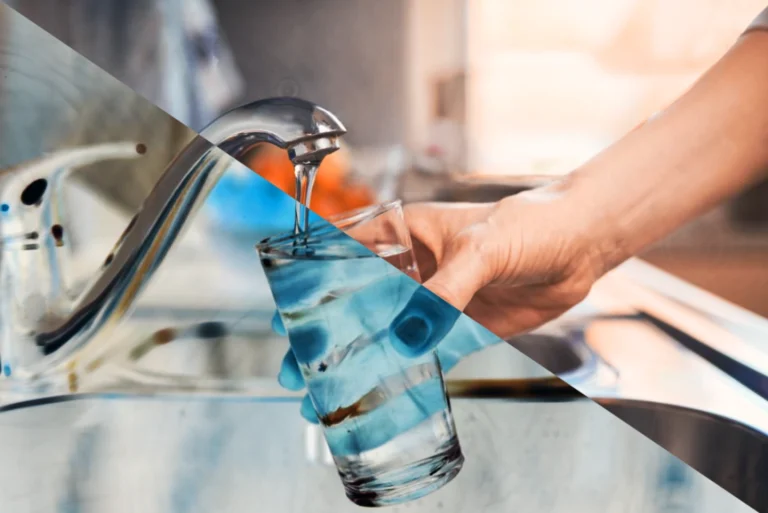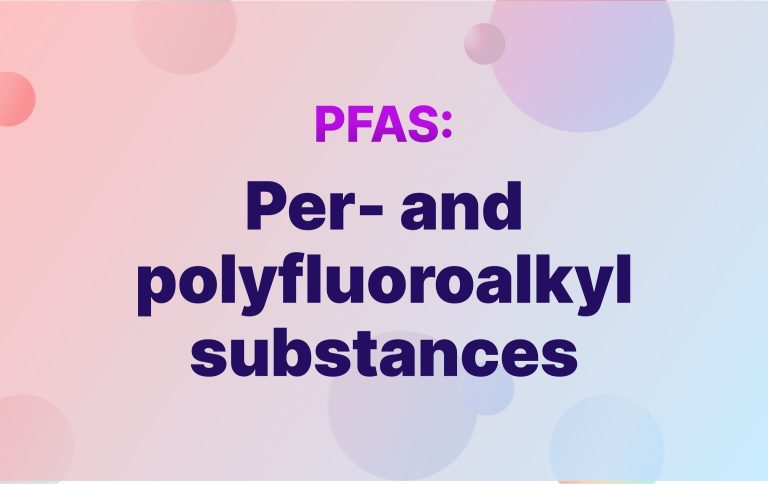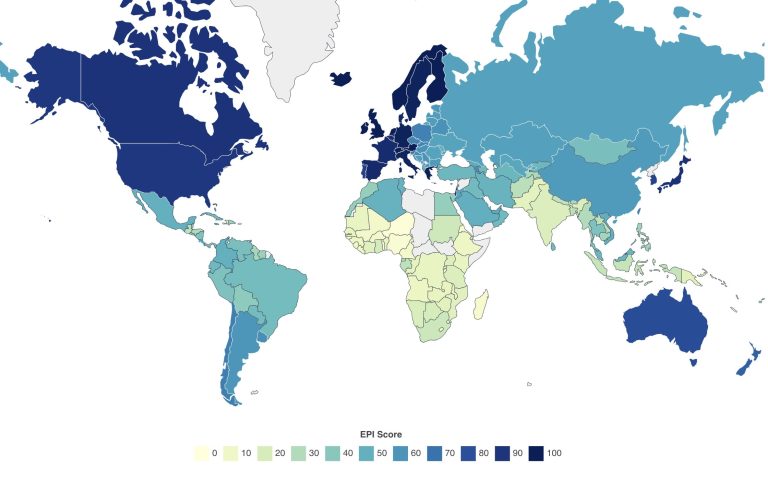The Difference Between PTFE and Teflon
The distinction between PTFE and Teflon often leads to confusion. This article aims to clear up misunderstandings for environmentalists and students. While the terms are frequently interchanged, recognizing their differences is key. It allows for a better understanding of their uses, safety, and environmental effects.
Concerns about the environmental and health impacts of PTFE and Teflon are part of a broader conversation about PFAS (per- and polyfluoroalkyl substances). Comparing PTFE to other PFAS shows differences in environmental and health impacts:
| Substance | Environmental Persistence | Potential Toxicity |
|---|---|---|
| PTFE | High | Low |
| Other PFAS | High | Varies |
Source: EPA on PFAS
This overview introduces PTFE and Teflon. It clarifies terms and compares them to other PFAS chemicals. We also examine their safety and environmental profiles. Finally, we discuss their various applications beyond cookware. The aim is to provide a clear understanding of these materials. We also highlight efforts to reduce their environmental impact.
Clarifying the Terminology: PTFE vs Teflon
Understanding the difference between PolyTetraFluoroEthylene (PTFE) and Teflon helps clarify common confusion in the realm of chemical compounds and their commercial names. While these terms are often used interchangeably, recognizing their distinction is important.
Polytetrafluoroethylene (PTFE) represents a synthetic fluoropolymer known for its resistance to heat, chemical resistance, and its non-stick properties. This polymer, consisting of carbon and fluorine atoms, is essential in both household and industrial settings for its:
- High melting point at approximately 327°C
- Resistance to most solvents and chemicals due to its chemical inertness
- Excellent weathering and heat resistance
- Superior electrical insulation capabilities
PTFE is integral to various industries, utilized in automotive shaft seals, bearings, gaskets, valve stem seals, and electronics insulation, reflecting its wide-ranging applications beyond just non-stick cookware.
Teflon, conversely, is a brand name owned by Chemours, a company that originated from DuPont, which was the first to develop PTFE in the 1940s. The brand’s name has become synonymous with PTFE, illustrating a genericized trademark phenomenon due to the brand’s significant market impact.
The key takeaway is that Teflon is a trademark used for PTFE-based products. The confusion arises mainly from Teflon’s market success, but “PTFE” remains the correct term for the material itself.
For additional insights into “Teflon vs PTFE,” refer to discussions available at NES. This resource helps clarify the distinctions and common misconceptions between these terms.
Understanding PFAS Chemicals
Per- and polyfluoroalkyl substances (PFAS) are man-made chemicals, including PTFE, which is the primary material in Teflon. These chemicals boast resistance to grease, oil, water, and heat, rendering them invaluable across multiple sectors, such as in the manufacture of non-stick cookware. However, the environmental and health ramifications of PFAS chemicals are becoming increasingly alarming.
These substances are both pervasive and persistent, maintaining their integrity in the environment and the human body, thereby earning the moniker “forever chemicals”. Their ability to resist degradation leads to accumulation in water, soil, and living organisms, culminating in widespread environmental contamination.
Concerns surrounding the prolonged exposure to PFAS are underscored by research linking these chemicals to a number of health issues including thyroid disorders, various cancers (kidney, testicular), reduced fertility, adverse developmental effects on fetuses, compromised immune responses in children, elevated cholesterol levels, and obesity. Given their ubiquitous presence in air, dust, food, soil, and water, the health impacts of PFAS exposure are a growing concern.
Legal thresholds for PFAS levels in drinking water have been instituted across various regions:
| Region | Legal Limit for PFAS in Drinking Water |
|---|---|
| United States | 0.5 µg/l total PFAS, 0.1 µg/l for 20 individual PFAS |
| European Union | 0.5 µg/l total PFAS, 0.1 µg/l for 20 individual PFAS |
While the benefits of PFAS, including their applications in Teflon-coated cookware, waterproof apparel, and firefighting foam, are significant, the detrimental effects necessitate a concerted effort towards the identification of alternatives and the tightening of regulatory guidelines. This highlights the imperative to reconcile technological progress with the principles of environmental protection.
Comparing PTFE to Other PFAS Substances
PTFE, or polytetrafluoroethylene, is a notable member of the PFAS (per- and polyfluoroalkyl substances) family. It is distinguished by its unique properties. These include a high melting point, hydrophobic nature, chemical inertness, low friction coefficient, and high flexural strength. PTFE is versatile, finding applications in domestic, medical, and industrial settings. It is widely known by the trade name Teflon, but its uses go beyond non-stick cookware.
Other PFAS chemicals, like perfluorooctanoic acid (PFOA) and perfluorooctanesulfonic acid (PFOS), have been used in various consumer products. These products range from stain-resistant fabrics to firefighting foams. However, PFOA and PFOS are persistent in the environment and linked to health concerns. This has led to increased regulatory scrutiny and efforts to phase them out.
Health concerns due to PFAS harm, specifically associated with PFOA (Perfluorooctanoic acid) and PFOS, include:
- Increased cholesterol levels
- High blood pressure and pre-eclampsia in pregnant women
- Developmental effects
- Decreased immune response
- Changes in liver function
- Increased risk of certain cancers
PTFE (Polytetrafluoroethylene material) and other PFAS chemicals have different applications:
- PTFE is used for its nonstick properties in cookware. It is also used in medical implants and industrial machinery because of its chemical and high temperature resistance.
- Other PFAS chemicals have been used for their water and oil-repellent properties. However, the health risks associated with PFOA and PFOS have led to a decrease in their use.
Environmentally, PTFE’s fluoropolymer structure makes it stable, demonstrating its chemical resistance, and it is less likely to release harmful byproducts under normal use and disposal, showcasing the environmental impact and PFA exposure considerations. This stability is an advantage over other PFAS substances. Those substances can persist in the environment and lead to health effects in humans and wildlife.
The Safety Profile of Teflon and PTFE
The debate on the safety of kitchen and industrial materials often highlights Teflon and PTFE. These concerns mainly arise from misunderstandings about their use.
Teflon, a brand name for nonstick coatings that primarily use PTFE, has faced scrutiny. A major concern is that overheating Teflon coatings can release harmful fumes. This careful usage ensures that the toxic vapors from fluorinated compounds, which can develop at temperatures above 360°C, are avoided, and PTFE doesn’t break down into toxins that could mix with air or food. Moreover, adherence to these guidelines significantly reduces the risk of exposure to fumes that can cause flu-like symptoms, such as headaches, chills, and fever.
Health and safety authorities worldwide have extensively examined Teflon and PTFE’s interaction with food and the human body, concluding that these materials are safe for cookware and industrial applications when used as intended.
The confusion over the dangers of Teflon and PTFE highlights the need for factual accuracy and guideline adherence. By following these guidelines, the benefits of using these materials can be enjoyed safely.
Environmental Considerations
The production and use of PTFE and Teflon have raised environmental concerns. These substances belong to the PFAS chemical family, linked to several environmental and health risks. Advances in manufacturing practices aim to minimize the ecological footprint of these materials.
Environmental and Health Risks Associated with PFAS, Including PTFE and Teflon:
- Environmental Risks:
- PFAS, known as “forever chemicals,” do not break down easily and can persist in the environment.
- They can accumulate in animal tissue and the environment due to their strong carbon-fluorine bond.
- PFAS have been detected worldwide in human blood at low levels.
- Health Risks:
- Can increase cholesterol levels and the risk of obesity.
- Linked to health issues like cancer (kidney and testicular), hormone disruption, and liver and thyroid problems.
- Associated with reproductive harm and abnormal fetal development.
- Manufacturers are often not required to disclose PFAS use, and most PFAS are unregulated and untested by the EPA.
The manufacturing of these materials previously involved PFOA, linked to several of these environmental and health issues. This practice has largely been phased out, replaced by more sustainable techniques. This change reflects a commitment to reducing these products’ environmental impact. The journey toward eliminating harmful substances has been challenging but has seen significant progress toward eco-friendly production methods.
The durability and longevity of PTFE and Teflon products also contribute to waste reduction. These products often last longer than their alternatives. This means they don’t need replacing as often, leading to decreased overall consumption and a reduced environmental footprint over their lifecycle.
Companies and researchers are exploring ways to make PTFE and Teflon production more environmentally friendly. Advances in nanotechnology and recycling methods show promise in reducing their environmental impact.
It’s vital for consumers and industries to stay informed about the environmental aspects of the products they use. Choosing products wisely and supporting responsible companies can mitigate the environmental effects of these materials.

Removing PFAS From Your Drinking Water
Homeowners can utilize water filter systems to remove PFAS from tap water. Granular Activated Carbon (GAC) filters are highly effective at reducing PFAS levels in drinking water. However, reverse osmosis (RO) water filters are one of the most efficient methods, capable of eliminating up to 99% of PFAS contaminants.
Both point-of-use (treating water at a single tap) and point-of-entry (treating all water entering the home) options are available. When selecting a filtration system, look for products certified to NSF/ANSI 53 for filters or NSF/ANSI 58 for reverse osmosis systems. It’s crucial to properly maintain these systems by regularly replacing filters according to manufacturer recommendations to ensure continued effectiveness.
Applications of PTFE and Teflon Beyond Cookware
Polytetrafluoroethylene (PTFE) and its brand counterpart, Teflon, are used in more than just non-stick cookware. Their resistance to heat, chemicals, and electrical issues make them suitable for various applications. These include the industrial, medical, and consumer sectors.
In the automotive field, PTFE is key in producing hoses, gaskets, and seals. Its ability to handle high temperatures and its low friction coefficient reduce wear and tear, thus extending the lifespan of parts.
In the medical industry, PTFE’s biocompatibility and electrical insulation properties are crucial. It is used to make grafts and stents for vascular surgeries. Its chemical inertness means it does not react negatively with the human body, making it safe for medical implants.
In electronics, PTFE (what PTFE is known for), functions as an effective insulator because of its electrical properties, including high dielectric strength. It insulates wiring and serves as a protective coating on printed circuit boards. Its ability to perform reliably from -400 to +550°F showcases its wide temperature range. Even at -200 degrees Celsius (-328 degrees Fahrenheit), it remains stable and flexible.
High-performance sportswear manufacturers use PTFE to repel water while retaining breathability. This improves both comfort and performance for the wearer.
The environmental sector uses PTFE in filters and containment materials. Its resistance to contaminants and extreme temperatures is valuable in air and water purification systems.
These examples highlight a portion of the applications for PPF and Teflon. As technology evolves, new uses are continually found, showcasing the materials’ versatility and importance. For more information on their applications, click here to learn more.
Future Perspectives
The future of PTFE and Teflon looks promising due to ongoing research and technological advances. These efforts aim to enhance durability, effectiveness, and environmental compatibility.
Nanotechnology, enhancing the use of PTFE and Teflon in new applications, plays a key role in these advancements. Researchers are incorporating nanoscale additives or structures to improve PTFE’s properties. This includes better wear resistance, further reduced friction, and enhanced thermal and electrical conductivities. Such improvements could broaden the uses of PTFE and Teflon in aerospace, electronics, and other sectors.
Environmental impact is a major focus of recent research into PTFE and Teflon. There is a drive towards more eco-friendly production methods. These efforts include reducing emissions and eliminating harmful chemicals from the manufacturing process. Also, new recycling methods for PTFE and Teflon products are emerging. These methods aim to reduce the environmental impact at the product’s end of life.
Another area of progress is the development of PTFE composites. These materials blend PTFE with other substances to overcome some of its inherent limitations. The table below shows some of these composite materials and the PTFE limitations they address:
| Composite Material | Addressing PTFE’s Limitations |
|---|---|
| Alumina Particles | Improve wear resistance and reduce cold flow |
| Graphite | Enhance lubrication properties and reduce wear |
| Molybdenum Di Sulphide | Increase chemical resistance and reduce friction |
| Aramid Fiber Reinforced Epoxy | Increase mechanical strength and reduce wear |
| Glass Fiber Reinforced PTFE | Improve electrical conductivity and eliminate galvanic corrosion |
| Ceramics | Enhance mechanical properties and reduce wear |
| Woven Fabric | Improve flexibility and reduce cold flow |
Blending PTFE with materials that offer complementary properties creates hybrids. These hybrids retain PTFE’s benefits while addressing its weaknesses, such as its low strength compared to other plastics.
The evolution of PTFE and Teflon continues. With each development, these materials are set to play a bigger role in our lives and industry. They demonstrate how chemical engineering can contribute to a sustainable and advanced future.





